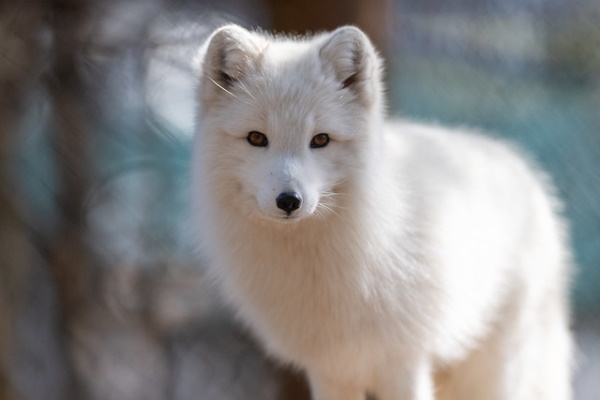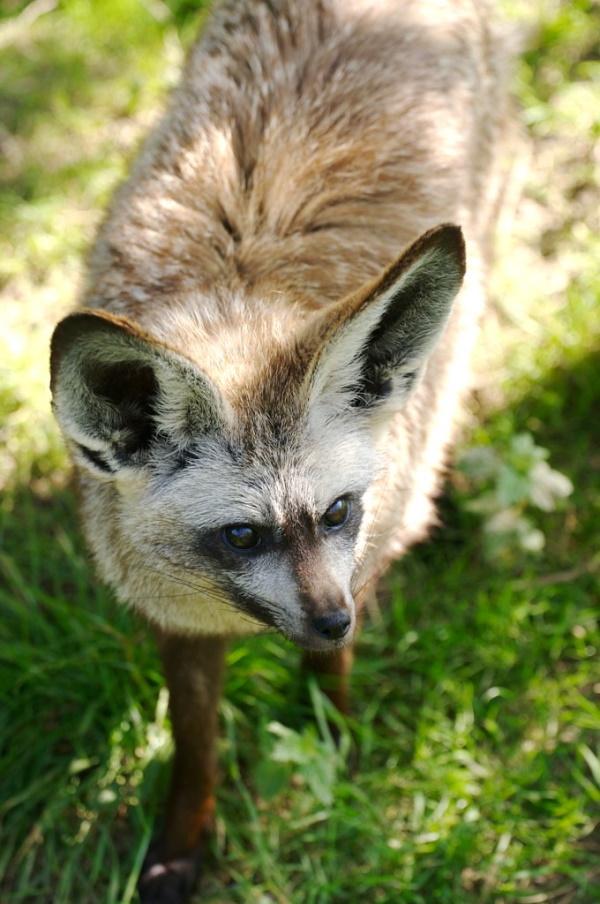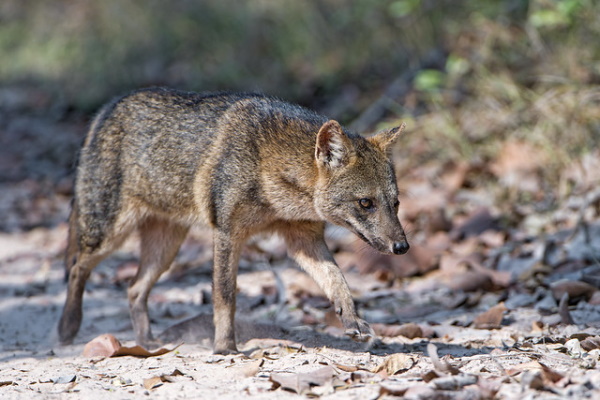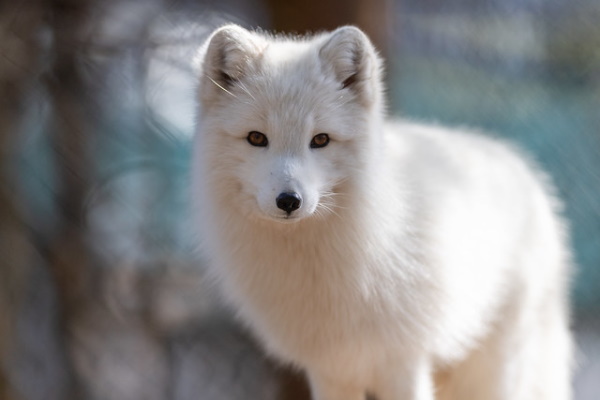Arctic Fox

One might say the Arctic Fox (Vulpes lagopus) is the er, polar opposite of the desert-dwelling Fennec Fox. This small fox has very small ears that help it retain body heat but like its tropical relative, it sports fur-covered paw pads. Arctic Foxes are known for their seasonal shifts from dark summer fur to snow-white winter fur and back again. (image via Eric Kilby)
* Fun Fox Factoid: You might expect Arctic Foxes to shiver easily in order to generate body heat in chill temperatures but biologists have found that this reflex doesn’t kick in until the ambient air temperature drops to at least −70 °C (−94 °F).
Bat-eared Fox

The Bat-eared Fox (Otocyon megalotis) is the only living species in the genus Otocyon. There are two recognized subspecies, however: Otocyon megalotis megalotis found in southern Africa and Otocyon megalotis virgatus, native to eastern Africa. Bat-eared Foxes are the only obligate insectivorous (they only eat bugs) canid species, although they will expand their diet to include small mammals, lizards, eggs, fruit and/or seeds as needed. (image via Dave Pullig)
* Fun Fox Factoid: Bat-eared Foxes prefer to eat termites although one particular termite species – the Snouted Harvester Termite – is avoided out of respect for this insects’ potent and pungent chemical defense.
Cape Fox

The Cape Fox (Vulpes chama) is native to arid and desert regions of southern Africa. As such, it shares the heat-regulating adaptation of overly large ears with its northern African cousin, the Fennec Fox. Cape Foxes are mainly nocturnal and crepuscular (night and dawn/dusk active) creatures who prefer to sleep away hot desert days in an underground burrow. (image via Bernard DUPONT)
* Fun Fox Factoid: It is believed that Cape Foxes diverged from the basal Vulpes fox genus earlier than most other species in the genus, as it retains many primitive skeletal features noted in fossils of prehistoric foxes.
Crab-eating Fox

The Crab-eating Fox (Cerdocyon thous) is native to savannah plains and forested woodlands in South America, ranging from northern Colombia to southern Uruguay. These dog-like foxes comprise 5 recognized subspecies mainly distinguished by average size and fur color. Crab-eating Foxes are monogamous, mating for life and typically hunting together in pairs. (image via Tambako The Jaguar)
* Fun Fox Factoid: As their name indicates, Crab-eating Foxes enjoy hunting for crabs on muddy flood plains and riverbanks. Their diet may also include turtle and bird eggs, tortoises, fruit, insects, lizards and carrion.
Admire wild foxes’ dog-head determination? Check out Hedge Dog: Creepy Cute ‘Bunny Harvestman’ Spider!





